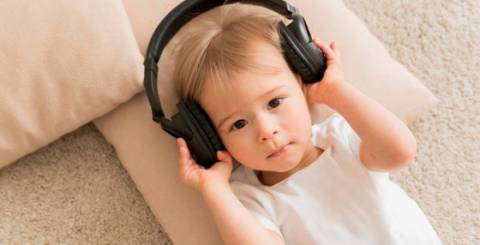What Is a Baby Voice Generator and Who Uses It?

In today's digital content landscape, creators are constantly seeking ways to make their productions more engaging, relatable, and authentic. One fascinating technology that has gained significant traction is the baby voice generator – a specialized AI tool designed to create realistic infant and toddler vocalizations without requiring actual babies to be present in recording studios.
This innovation is transforming how various industries approach content featuring the youngest voices, offering practical solutions to long-standing challenges in media production.
Understanding Baby Voice Generator Technology
At its core, a baby voice generator uses advanced artificial intelligence and machine learning algorithms to synthesize realistic baby sounds and vocalizations. Unlike simple sound effect libraries that offer limited pre-recorded clips, modern baby voice technology can generate customized, nuanced baby speech patterns that can be adjusted for age, emotion, and vocal characteristics.
These systems typically work by training on carefully collected samples of real baby vocalizations – from coos and gurgles to early word attempts and babbling patterns. The AI then learns to recognize and reproduce the unique acoustic properties that make baby voices instantly recognizable to our ears: higher pitch, distinctive formant patterns, characteristic rhythm patterns, and the particular vocal timbre unique to infants.
The most sophisticated generators can produce everything from happy babbling to frustrated cries, sleepy murmurs, and even early speech attempts with remarkable authenticity. They can also be fine-tuned to match specific developmental stages, from newborn sounds to the more complex vocalizations of toddlers beginning to form words.
Commercial Applications in Advertising and Marketing
The advertising industry has embraced baby voice generation technology with particular enthusiasm. Creating commercials featuring babies presents numerous challenges: unpredictable behavior during shoots, a limited working time allowed with infant actors, and the difficulty of getting specific vocalizations on cue.
Diaper brand Pampers recently demonstrated the practical advantages of this technology in their "Sleep Like a Baby" campaign. The marketing team needed specific baby sounds to match precisely timed visual sequences showing peaceful sleeping infants. Rather than hoping to capture these sounds during limited shooting sessions with real babies, they utilized voice generation technology to create perfectly timed coos and gentle breathing sounds that synchronized exactly with their visuals.
"Getting a real baby to make specific sounds at the exact moment needed for a commercial is nearly impossible," explains marketing director Samantha Chen. "With voice generation technology, we could focus on capturing beautiful visuals during our brief sessions with infant models, then add precisely the right vocalizations during post-production."
Baby food companies have similarly embraced this technology to create content that shows babies' reactions to new flavors. Gerber's recent digital campaign featured babies apparently responding to their organic food lines with delighted babbles and excited vocalizations – all carefully crafted to match the facial expressions of the babies while maintaining perfect audio clarity that would be difficult to capture in actual feeding sessions.
Educational and Training Applications
Perhaps surprisingly, baby voice generation has found valuable applications in educational and training contexts. Medical training programs have incorporated the technology into simulation exercises for pediatric healthcare providers, creating realistic scenarios where medical professionals must respond to different baby cries and vocalizations.
The University of Michigan's nursing program utilizes a training system where student nurses must identify whether synthesized baby cries indicate hunger, pain, or sleepiness – helping future healthcare providers develop critical assessment skills in a controlled environment. The ability to generate multiple variations of each cry type allows for comprehensive training across different scenarios.
Language development researchers have also adopted the technology to create controlled stimuli for studying how adults and children respond to infant vocalizations. Dr. Elena Rodriguez at Boston University explains: "By using generated baby vocalizations, we can precisely control acoustic features while maintaining naturalness, allowing us to isolate exactly which properties of baby sounds trigger caregiving responses in adults."
Early childhood education programs have implemented these tools in parent training modules, helping new parents recognize different cry patterns and appropriate responses. The "New Parent Navigator" app uses generated baby sounds to create interactive scenarios where parents practice identifying needs based on different vocalization patterns – a practical application that would be impossible to implement with recordings of actual infants.
Entertainment Industry Applications
The entertainment industry faces particular challenges when creating content featuring babies and very young children. Strict regulations limit working hours, while the unpredictable nature of infants makes capturing specific performances nearly impossible. Voice generation technology offers a practical solution that benefits both production teams and child welfare.
Animation studios were early adopters of this technology. DreamWorks Animation used baby voice generation extensively in their recent project "Tiny Humans," which featured realistic infant characters. Lead sound designer Michael Patel noted: "Traditional approaches would have required hundreds of studio hours with actual babies, which is both impractical and potentially stressful for the infants. Voice generation allowed us to create authentic baby vocalizations that perfectly matched our animated characters' expressions and actions."
Live-action productions have also embraced the technology. The hit streaming series "First Year" about new parents features numerous scenes with their infant son. While the visual portions used twins who alternated on set (a common practice to comply with strict working hour limitations for infants), many of the baby's vocalizations were created using voice generation technology. This approach allowed the production team to capture perfect visual takes without waiting for specific vocalizations, then add exactly the right sounds during post-production.
Video game developers have similarly adopted the technology for creating more immersive family-centered gameplay. "Virtual Family," a popular simulation game, uses generated baby vocalizations that respond dynamically to player actions – creating uniquely responsive virtual infants that would be impossible to achieve with pre-recorded sound libraries.
Content Creation and Social Media
The democratization of content creation tools has extended to baby voice technology, with several social media management platforms now offering simplified interfaces that allow YouTubers, TikTok creators, and other digital content producers to incorporate realistic baby vocalizations into their videos.
Family vloggers particularly appreciate these tools for enhancing videos where their actual infants didn't vocalize at particularly cinematic moments. As family content creator Jamie Wilson explains: "Sometimes you capture a perfect visual moment – your baby's first snowfall experience or reaction to a new food – but they happen to be quietly staring rather than making adorable sounds. Voice generation helps enhance these moments authentically without misrepresenting what happened."
Educational content creators use the technology to produce clear demonstrations in parenting tutorials. Rather than hoping a real baby will demonstrate a particular cry pattern during filming, creators can generate perfect examples of different cry types when explaining concepts like "hunger cries versus tired cries" to new parents.
Ethical Considerations and Best Practices
As with any technology involving representations of children, ethical considerations are paramount when using baby voice generation. Responsible creators follow several important guidelines:
- Transparency with audiences when synthetic baby voices are used
- Avoiding generating vocalizations that would cause distress to actual infants
- Not using the technology to misrepresent actual babies' experiences or reactions
- Following the same content standards that would apply when working with real infants
Most reputable voice generation services require users to agree to ethical guidelines before accessing their tools, prohibiting uses that could be misleading or potentially harmful.
Industry standards continue evolving, with marketing associations and entertainment guilds developing specific guidelines for the appropriate use of synthetic baby vocalizations in commercial content. These typically emphasize transparency with audiences and responsible application of the technology.
Future Directions
The technology continues advancing rapidly, with next-generation systems promising even more realistic and customizable baby vocalizations. Emerging capabilities include:
- Age-specific voice models ranging from premature infants to early talkers
- Emotional variation controls for creating precisely calibrated responses
- Cultural and linguistic variations that reflect different language environments
- Interactive systems that can generate responsive baby vocalizations in real-time
Healthcare applications are particularly promising, with researchers developing diagnostic tools that can compare a real baby's vocalizations against typical developmental patterns, potentially identifying communication delays or hearing issues earlier than traditional screening methods.
Conclusion
Baby voice generation technology represents a fascinating convergence of artificial intelligence, acoustic science, and practical content creation needs. By offering a way to create authentic infant vocalizations without the practical and ethical challenges of recording actual babies, these tools are transforming how creators across industries approach content featuring our youngest humans.
From advertisers seeking perfect sound synchronization to educators developing training tools, entertainment producers creating immersive content, and healthcare providers developing new diagnostic approaches, baby voice generation is finding diverse and valuable applications. As the technology continues advancing, its impact will likely expand further across industries where authentic infant vocalizations enhance communication, education, and entertainment.
When implemented with appropriate ethical considerations and transparency, these tools offer practical solutions to long-standing challenges in media production while potentially supporting infant welfare by reducing the need for babies to spend time in recording studios. The future of baby vocalizations in media increasingly appears to be a thoughtful blend of real and synthesized content, each used where most appropriate for both creative needs and infant wellbeing.
Similar Articles
With the advancement of technology, goods are now being produced at an enormous rate and in diverse regions throughout the globe, which has transformed industries.
Discover how industrial printer ink differs from regular ink—durability, high-volume performance, and cost-efficiency for B2B printing needs.
Atomic Absorption Spectroscopy (AAS) is applied in fields like healthcare, food safety, and pharmaceuticals.
Modern businesses have come to rely on technological infrastructure, and quite heavily at that, no? Everyone can see the growing dependence of all industries on digital solutions to go about their operations. However, the complexity of modern business is beginning to necessitate the kind of technological solutions that can scale with changing requirements
Digital technologies and the transformation they have brought about have fundamentally altered how businesses operate. This has resulted in an increase in data generation and the adoption of various software, among other things
Users today are pickier than ever. They want their needs met with a few clicks or taps on the screen. Failure to meet their needs results in site abandonment, which is not a positive sign for a business aiming to be successful. The traditional way of information sharing through websites requires a reload for every action a user performs.
The demand for innovation is immense, isn't it? Then there is also the need to adapt to rapidly changing market demands. Phew! Businesses have so much to deal with, especially the seemingly unending challenge of maintaining IT infrastructure.
User experience (UX) is a crucial part of any digital product. A smooth and enjoyable user experience keeps customers engaged. Businesses are now investing in UX consulting services to stay ahead of the competition.
Industries that deal with nuclear energy must be cautious. They need to inspect their equipment often to prevent accidents. Traditional inspection methods can be slow and risky for workers









